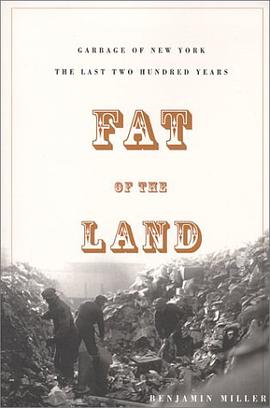

具体描述
Table Of Contents
PART I INTRODUCTION
1 (44)
The Public Sector
3 (22)
Politics and Economics
4 (2)
Public Choice or Benevolent Despot?
5 (1)
The Activities of Government
6 (10)
Federal, State, and Local Governments
6 (2)
Federal Expenditures
8 (3)
The Federal Deficit and Interest Expenditures
11 (1)
Federal Government Revenues
12 (2)
The Growth of Government in the Twentieth Century
14 (1)
International Comparisons
15 (1)
Conclusion
16 (1)
Questions for Review and Discussion
17 (8)
Principles for Analyzing Government
25 (20)
The Market Economy
26 (1)
Economic Efficiency and the Competitive Market
26 (1)
The Role of Government
27 (2)
The Market System and Individual Rights
29 (2)
The Government as Protector of Rights
29 (1)
The Government as Violator of Rights
30 (1)
The Public Interest
31 (2)
The Greatest Good for the Greatest Number
31 (1)
Utilitarianism
32 (1)
The Pareto Criteria
33 (4)
Market Exchange and the Pareto Criteria
35 (1)
Political Exchange and the Pareto Criteria
35 (1)
Limitations of the Pareto Criteria
36 (1)
Other Measures of the Public Interest
37 (3)
Potential Compensation
37 (1)
The Social Welfare Function
38 (1)
Cost-Benefit Analysis
39 (1)
Positive and Normative Economics
40 (2)
Normative Analysis and the Public Interest
41 (1)
Equity and Efficiency: The Goals of Public Policy
42 (1)
Conclusion
43 (1)
Questions for Review and Discussion
44 (1)
PART II ECONOMIC EFFICIENCY
45 (84)
Property Rights and Economic Efficiency
47 (21)
Property Rights
47 (1)
Poorly Defined Property Rights
48 (2)
Overuse of Resources with Poorly Defined Property Rights
50 (2)
Property Rights and the Protection of Endangered Species
51 (1)
Property Rights and Resource Allocation
51 (1)
The Coase Theorem
52 (3)
Income Effects
53 (1)
The Reciprocal Nature of the Problem
54 (1)
Do Property Rights Have to Be Predefined?
54 (1)
Small Numbers and Large Numbers
55 (1)
Small Numbers Mean Low Transactions Costs
55 (1)
Large Numbers Mean High Transactions Costs
55 (1)
Transactions Costs and Property Rights
56 (1)
The Common Pool Problem
56 (2)
Common Ownership and Overuse
57 (1)
Solutions to the Common Pool Problem
57 (1)
Government versus Private Ownership
58 (4)
Government Ownership and Resource Allocation
58 (1)
Public Policy and Government Ownership
59 (1)
Communal Ownership in Centrally Planned Economies
60 (1)
The Incentives of Government Managers
61 (1)
Property Rights and Entitlements
62 (1)
Land Use Planning: An Application of Property Rights Theory
62 (4)
Property Rights and the Law of Nuisance
63 (1)
The Justification for Zoning Laws
63 (1)
Restrictive Covenants
64 (1)
Twenty-First Century Land Use Planning
65 (1)
Conclusion
66 (1)
Questions for Review and Discussion
67 (1)
Externalities
68 (22)
The Definition of an Externality
68 (1)
Public Policy toward Externalities
69 (1)
Negative Externalities
70 (1)
Negative Externalities in a Supply and Demand Framework
71 (4)
Private Actions to Correct an Externality
72 (1)
Corrective Taxation of an Externality
72 (1)
What Should Be Taxed?
73 (1)
Should Compensation Be Paid to Those Who Are Harmed?
74 (1)
Taxation versus Regulation
75 (3)
The Politics of Quotas versus Taxes
77 (1)
Incentives for Pollution Reduction with Regulation versus Taxation
77 (1)
Marketable Pollution Rights
78 (2)
Marketable Rights in the Clean Air Act of 1990
79 (1)
Politics and Pollution Control
79 (1)
The Optimal Amount of Pollution
80 (1)
Positive Externalities
81 (2)
Excess Burden and Excess Benefit
83 (1)
Technological and Pecuniary Externalities
83 (2)
Marginal and Inframarginal Externalities
85 (3)
Negative Inframarginal Externalities
86 (1)
Positive Inframarginal Externalities
87 (1)
Conclusion
88 (1)
Questions for Review and Discussion
89 (1)
Public Goods
90 (18)
Collective Consumption Goods
91 (4)
The Argument for Public Sector Production
91 (2)
The Argument for Private Sector Production
93 (1)
Congestion of Collective Consumption Goods
94 (1)
The Optimal Output of a Collective Consumption Good
95 (3)
Vertical Summation of Individual Demand Curves
95 (1)
Lindahl Pricing
96 (2)
Pure and Impure Collective Consumption Goods
98 (1)
Public Policy toward Collective Consumption Goods
99 (1)
Nonexcludability
100 (2)
Nonexcludability as a Prisoners' Dilemma
100 (2)
Exclusion Costs and Public Sector Production
102 (1)
Nonexcludability and Collective Consumption in Public Goods
102 (2)
Public Policy toward Public Goods
104 (2)
Conclusion
106 (1)
Questions for Review and Discussion
107 (1)
The Economic Role of the State
108 (21)
Protection of Rights
109 (1)
Protection of Rights in a Market Economy
109 (1)
How Much Protection Is Optimal?
110 (1)
Government Production
110 (1)
Government Regulation
111 (1)
Information and Regulation
111 (1)
Politics and Regulation
112 (1)
The Capture Theory of Regulation
112 (6)
Special Interests versus the General Public
112 (1)
The Regulatory Agency as a Cartel
113 (1)
The Equilibrium Level of Regulation
114 (2)
The Transitional Gains Trap
116 (1)
Regulation in Perspective
117 (1)
Redistribution
118 (2)
Reasons for Government Redistribution
118 (1)
Politics and Redistribution
119 (1)
Stabilization
120 (1)
Can the Government Perform These Functions?
120 (1)
Information Problems
120 (1)
Policy Conflicts
121 (1)
Will the Governments Perform These Functions?
121 (1)
The Free Rider Problem
122 (1)
Free Riding and Shirking
122 (1)
Free Riding and Understatement of Demand
123 (1)
The Holdout Problem
123 (2)
Solutions to the Holdout Problem
124 (1)
Eminent Domain
124 (1)
Unanimity and Holdouts
125 (1)
Consent and Coercion
125 (1)
Conclusion
126 (1)
Questions for Review and Discussion
127 (2)
PART III AN ECONOMIC ANALYSIS OF DEMOCRACY
129 (70)
A Theory of Collective Action
131 (23)
Collective Action and Collective Decision Making
131 (2)
Collective Action
132 (1)
Individual Preferences and Group Preferences
132 (1)
The Pareto Principle and the Rule of Unanimity
133 (1)
Optimal Departures from Unanimity
134 (3)
Decision-Making Costs
134 (1)
External Costs
135 (1)
The Optimal Decision Rule
136 (1)
Optimal Club Output and Club Size
137 (3)
The Optimal Sharing Group
139 (1)
Representative Democracy
140 (1)
The Economic Model of Democracy
141 (1)
Optimal Constitutional Rules
142 (4)
The Rawlsian Veil of Ignorance
143 (1)
Renegotiation of the Contract
143 (2)
Consensus and Constitutional Rules
145 (1)
Rules and Outcomes: A Procedural Theory of Justice
145 (1)
Applying the Procedural Theory of Justice
146 (1)
The Evolution of Cooperation
146 (4)
Axelrod's Tournament
147 (1)
Implications of Axelrod's Tournament
148 (1)
The Results of Human Action but Not of Human Design
149 (1)
The Normative Basis for Government
150 (1)
Conclusion
151 (1)
Questions for Review and Discussion
152 (2)
Public Sector Demand
154 (21)
The Median Voter Model
155 (3)
The Committee Process
155 (1)
A Referendum Model
156 (1)
The Median Voter in a Representative Democracy
157 (1)
Representative Democracy
158 (5)
The Decisive Median Voter
159 (1)
Candidates Tend to Adopt Similar Platforms
159 (1)
Extreme Candidates
160 (1)
The Equilibrium Number of Political Parties
161 (2)
The Cyclical Majority
163 (3)
Single-Peaked Preferences
163 (1)
Cycles and Political Institutions
164 (2)
Information and Incentives
166 (4)
The Political Marketplace
166 (1)
Rational Ignorance of Voters
166 (1)
Special Interests
167 (1)
Special Interests versus the Public Interest
168 (1)
The Demand for Immediate Results
169 (1)
Public Sector Demand in Theory and in the Real World
170 (1)
The Median Voter Model and Political Competition
170 (1)
Economic Efficiency and the Median Voter
171 (1)
Public Sector Efficiency
171 (1)
Efficiency in the Real World
172 (1)
Conclusion
172 (1)
Questions for Review and Discussion
173 (2)
Supply and Demand in Political Markets
175 (24)
Special Interests and Government Programs
176 (3)
Special Interests and Political Exchange
176 (2)
Representation of Interests and the Organization of Congress
178 (1)
Logrolling and Political Exchange
179 (2)
Logrolling and Special Interests
180 (1)
Logrolling and Economic Efficiency
180 (1)
Agenda Control
181 (3)
A Referendum Example
182 (1)
Agenda Control in the Real World
183 (1)
Rent Seeking
184 (3)
The Welfare Costs of Rent Seeking
186 (1)
Public Sector Suppliers
187 (3)
Incentives in Bureaucracy
188 (1)
Utility and Budget Maximization in the Public Sector
188 (1)
The Public Interest and Budget Maximization
189 (1)
The Bureaucrat's Maximand
189 (1)
The Public Sector Bargaining Process
190 (3)
The Bureau and the Legislature
190 (1)
The Bureau's Bargaining Advantage
190 (1)
The Bureaucratic Bargaining Process
191 (2)
The Government as an Interest Group
193 (1)
Fiscal Federalism
193 (2)
Federalism and Special Interests
193 (1)
Federalism and Consumer Choice
194 (1)
Comparisons with Other Governments
194 (1)
Production at Lower Levels of Government
195 (1)
Conclusion
195 (1)
Questions for Review and Discussion
196 (3)
PART IV TAXATION
199 (150)
Positive Principles of Taxation
201 (23)
Tax Shifting
202 (3)
A Unit Tax Placed on Suppliers
202 (1)
A Unit Tax Placed on Demanders
203 (1)
A Tax on Suppliers versus a Tax on Demanders
204 (1)
Elasticities and Tax Incidence
205 (3)
Perfectly Elastic or Perfectly Inelastic Supply
206 (1)
Shifts in the Tax Burden
207 (1)
The Welfare Cost of Taxation
208 (3)
The Excess Burden as a Cost of Taxation
210 (1)
Lump Sum Taxes
210 (1)
Excess Burden and Individual Choice
211 (4)
Inelastic Labor Supply and the Welfare Cost of an Income Tax
213 (1)
Utility Functions and Excess Burden
214 (1)
Minimizing the Excess Burden of Taxation
215 (3)
The Ramsey Rule
216 (1)
The Marginal Cost of Public Spending
217 (1)
Additional Costs of the Tax System
218 (2)
Compliance Costs
219 (1)
Administrative Costs
219 (1)
Political Costs
219 (1)
Earmarked Taxes
220 (2)
General Fund Financing versus Earmarking
220 (1)
The Advantages and Disadvantages of Earmarking
221 (1)
Conclusion
222 (1)
Questions for Review and Discussion
223 (1)
Principles of Tax Policy
224 (19)
The Benefit Principle
225 (2)
Efficiency and the Benefit Principle
225 (1)
Actual Taxes and the Benefit Principle
226 (1)
The Ability-to-Pay Principle
227 (2)
Ability to Pay and the Benefits of Public Expenditures
227 (1)
Ability to Pay and the Public Interest
228 (1)
Implementing Ability to Pay
229 (3)
Horizontal Equity
229 (2)
Vertical Equity
231 (1)
Progressive, Proportional, and Regressive Taxes
232 (2)
Sumptuary Taxes
234 (2)
Sumptuary Taxes and Excess Burden
234 (1)
Sin Taxes and Healthy Living
235 (1)
Politics and Tax Policy
236 (3)
Special Interests and Taxation
236 (1)
Federal versus State and Local Taxation
237 (1)
Tax Reform
238 (1)
Tax Policy in the Real World
239 (1)
Equity and Efficiency
239 (1)
Individual Taxes versus the Tax System
239 (1)
Conclusion
240 (2)
Questions for Review and Discussion
242 (1)
Taxes on Economic Transactions
243 (26)
Excise Taxes, Unit Taxes, and Ad Valorem Taxes
243 (4)
Unit Taxes versus Ad Valorem Taxes
244 (1)
Advantages and Disadvantages of Unit Taxes and Ad Valorem Taxes
245 (1)
Revenues from Excise Taxes
246 (1)
User Charges
247 (4)
User Charges and Economic Efficiency
247 (1)
User Charges and Demand Revelation
247 (1)
User Charges and Equity
248 (1)
Approximating User Charges in the Real World
249 (1)
User Charges as Taxes
249 (1)
User Charges and Public Enterprise
249 (1)
Revenues from User Charges
250 (1)
Import and Export Taxes and Quotas
251 (5)
Import and Export Taxes and Revenue Generation
251 (1)
Import Taxes and Trade Restrictions
252 (2)
Quotas versus Tariffs
254 (1)
Trade Agreements
255 (1)
General Sales Taxes
256 (5)
A General Sales Tax as a Consumption Tax
256 (1)
Is the Sales Tax Regressive?
257 (1)
Sales Taxes and the Internet
258 (1)
Income and Substitution Effects
259 (1)
Can Leisure Be Taxed?
260 (1)
Turnover Taxes
261 (1)
The Value Added Tax
261 (5)
The Value Added Tax versus the Sales Tax
262 (2)
The Value Added Tax in the European Union
264 (1)
The Visibility of the Tax
265 (1)
A Value Added Tax in the United States?
266 (1)
Conclusion
266 (1)
Questions for Review and Discussion
267 (2)
The Taxation of Income
269 (20)
Sales, Consumption, and Income Taxes
270 (2)
Sales and Consumption Taxes
270 (1)
Consumption and Income Taxes
271 (1)
Taxes on Saving
271 (1)
Definitions of Income
272 (4)
In-Kind Benefits
272 (1)
Changes in Wealth
273 (1)
Imputed Rental Income
274 (2)
The Income-Leisure Trade-Off
276 (2)
Taxed versus Nontaxed Activities
276 (1)
Income versus Leisure
276 (2)
The Backward-Bending Supply Curve of Labor
278 (3)
Tax Rates and Tax Revenues
281 (3)
Rates and Revenues in the 1980s
282 (1)
Taxes Paid by Income Groups for Three Decades
283 (1)
Average and Marginal Tax Rates
284 (2)
Marginal Tax Rates and Excess Burden
285 (1)
The Flat Tax
285 (1)
The Double Tax on Saving
286 (1)
Conclusion
287 (1)
Questions for Review and Discussion
287 (2)
Personal Income Taxation in the United States
289 (19)
A Brief History of the U.S. Income Tax System
289 (5)
Federal Income Tax Rates
290 (1)
Withholding
291 (1)
Tax Reform in 1964, 1986, and 2002
292 (2)
Calculating Taxable Income
294 (4)
Computation of Income
294 (1)
Exemptions
295 (1)
Deductions
295 (2)
Tax Computation
297 (1)
Tax Credits
298 (1)
Broadening the Tax Base
298 (2)
The Alternative Minimum Tax
300 (1)
Tax Expenditures
300 (2)
Inflation, Indexation, and Bracket Creep
302 (2)
Individual Retirement Accounts
304 (1)
The Roth IRA
305 (1)
Other Tax-Deferred Savings Methods
305 (1)
Conclusion
305 (1)
Questions for Review and Discussion
306 (2)
Taxes on Business Income and Wealth
308 (25)
The Corporate Income Tax
308 (4)
Characteristics of the Corporate Income Tax
309 (1)
Interaction between Corporate and Personal Income Taxes
310 (1)
Fringe Benefits
311 (1)
Depreciation
312 (1)
The Burden of the Corporate Income Tax
313 (4)
Competitive Markets
314 (1)
Monopoly
315 (2)
The Income Tax and the Return to Bearing Risk
317 (1)
The Taxation of Capital Gains
317 (3)
Unrealized Capital Gains
318 (1)
Capital Gains Taxation as a Double Tax
318 (1)
Inflation and Capital Gains
319 (1)
Wealth and Property Taxation
320 (1)
Incentives in Income Taxes and Wealth Taxes
321 (1)
Unrealized Capital Gains and Wealth Taxation
321 (1)
The Property Tax
322 (2)
Locational Decisions and the Property Tax
322 (1)
Property Tax Limitations
323 (1)
Differing Property Tax Rates
324 (1)
Site Value Taxation
324 (3)
Site Value Taxation versus Property Taxation
325 (1)
Site Value Taxation and the Value of Land
326 (1)
The Inheritance Tax
327 (2)
Avoiding the Tax
327 (1)
Justifications for an Inheritance Tax
328 (1)
Severance Taxes
329 (1)
Conclusion
329 (2)
Questions for Review and Discussion
331 (2)
The Tax System in the United States
333 (16)
Federalism and the Tax System
334 (1)
Federal Taxes
335 (1)
Intergovernmental Revenues
336 (1)
State and Local Taxes
337 (2)
The Progressivity of the Tax System
339 (2)
Political Influences on the Tax System
341 (1)
Tax Reform
342 (2)
Comprehensive versus Piecemeal Tax Reform
343 (1)
Revenue-Neutral Tax Reform
343 (1)
Taxes in Isolation and the Tax System
344 (1)
Conclusion
345 (1)
Questions for Review and Discussion
346 (3)
PART V GOVERNMENT EXPENDITURE PROGRAMS
349 (150)
The Government Budgeting Process
351 (18)
The Federal Budgeting Process
352 (2)
Budgetary Reform in the Twentieth Century
352 (1)
The President's Budget
352 (1)
The Congressional Budget
353 (1)
Incrementalism
354 (2)
The Effects of Special Interests
354 (1)
Incrementalism and Efficiency
355 (1)
Politics and the Federal Budget
356 (1)
Entitlements
357 (1)
Off-Budget Expenditures
357 (1)
Program Budgets versus Line Item Budgets
358 (2)
The Planning-Programming-Budgeting System
359 (1)
Cost-Benefit Analysis
360 (3)
Enumerating the Options
360 (1)
Enumerating the Costs and Benefits
360 (1)
Converting the Costs and Benefits to Dollar Terms
361 (1)
Cost-Benefit Analysis as a Decision-Making Tool
362 (1)
Cost-Benefit Analysis and the Public Interest
362 (1)
The Discount Rate
363 (2)
Present Value Measurement of Costs and Benefits
363 (1)
Choosing the Right Discount Rate
364 (1)
Average and Marginal Benefits
365 (1)
Taxing and Spending
366 (1)
Conclusion
367 (1)
Questions for Review and Discussion
368 (1)
Taxation and Redistribution
369 (18)
Principles of Taxation and Redistribution
369 (1)
Equality as a Social Goal
370 (2)
Equality of Opportunity and Equality of Results
372 (1)
Fair Rules and Fair Outcomes
372 (1)
The Goal of Equality
373 (2)
Utilitarian Justifications
373 (1)
Utility Maximization of Those Least Well Off
374 (1)
Charity as a Collective Consumption Good
375 (1)
Charitable Giving as a Pareto Superior Move
375 (1)
The Incentive to Free Ride
375 (1)
Redistribution as Insurance
376 (1)
Progressive Taxation and Wage Adjustment
376 (2)
Distributive Government
378 (2)
The Incentive Structure of Government Programs
378 (2)
Redistributive Programs and the Poor
380 (2)
Incentives to Earn Less Income
380 (1)
The Hard-Core Poor and the Marginal Poor
381 (1)
Growing Dependency on Government Programs
381 (1)
The Politics of Redistribution
382 (3)
Administrator Incentives
383 (1)
The Goals of Redistribution
384 (1)
Conclusion
385 (1)
Questions for Review and Discussion
386 (1)
Government Redistribution Programs
387 (19)
Cash versus Payment in Kind
387 (3)
Cash Payments and Utility Maximization
388 (1)
The Rationale for In-Kind Payments
389 (1)
The Negative Income Tax
390 (4)
The Incentive to Substitute into Leisure
391 (1)
Redistribution and the Income of the Poor
392 (1)
The Excess Burden of a Negative Income Tax
393 (1)
The Earned Income Tax Credit
394 (1)
Temporary Aid to Needy Families
394 (2)
Food Stamps
396 (3)
Housing Subsidies
399 (2)
Public Housing
399 (1)
Rent Subsidies
400 (1)
Homelessness
401 (2)
Conclusion
403 (1)
Questions for Review and Discussion
404 (2)
Social Security
406 (21)
The Social Security Payroll Tax
407 (2)
Contributions
407 (2)
The Structure of the Tax
409 (1)
The Burden of the Payroll Tax
409 (1)
Tax Shifting and the Payroll Tax
409 (1)
The Visibility of the Payroll Tax
410 (1)
Coverage
410 (2)
Eligibility
411 (1)
The Redistributive Nature of the Program
411 (1)
The Pay-as-You-Go System of Financing
412 (1)
The Viability of Pay-as-You-Go
413 (1)
The Political Determination of Benefits and Costs
413 (1)
Social Security and Capital Accumulation
414 (2)
Funded Pensions
415 (1)
Unfunded Pensions
415 (1)
The Growth of the Social Security Program
416 (1)
Social Security as an Investment
417 (4)
The Structure of the System
420 (1)
Future Tax Rates
420 (1)
Growth in Income
420 (1)
The Future of Social Security
421 (1)
Proposals for Reform
421 (4)
Insurance and Welfare
421 (1)
Raising the Retirement Age
422 (1)
Eliminating Pay-as-You-Go
422 (1)
Financing the Program's Deficit from General Revenues
423 (1)
The Cost of the Imbalance in Social Security Revenues and Expenditures
424 (1)
Conclusion
425 (1)
Questions for Review and Discussion
426 (1)
Education
427 (15)
The Growth in Education: Students and Expenditures
427 (3)
Rationales for Government Involvement
430 (2)
Education Produces a Positive Externality
430 (1)
Socialization
430 (1)
Fairness
431 (1)
The Level of Government Financing
432 (1)
Competition, Vouchers, and School Choice
433 (4)
Vouchers
433 (1)
Public School Choice
434 (1)
Charter Schools
435 (1)
Homeschooling
436 (1)
School Choice at the College Level
436 (1)
The Payoff to Education
437 (3)
Income Advantages to Education
437 (1)
Signaling versus Human Capital
438 (1)
Education and Productivity
439 (1)
Conclusion
440 (1)
Questions for Review and Discussion
440 (2)
Health Care
442 (18)
Rationales for Government Involvement
442 (1)
Public Health
443 (2)
Public versus Private Health
444 (1)
Public Health Policy
444 (1)
Health Insurance
445 (1)
Moral Hazard and Adverse Selection
446 (1)
Health Insurance Incentives
447 (3)
Deductibles and Copayments
448 (1)
Health Maintenance Organizations (HMOs)
448 (1)
Hospital Reimbursement for Insured Expenses
449 (1)
The Evolution of Twentieth-Century Health Care
450 (1)
Government Health Care Programs
451 (3)
Medicare
451 (1)
Medicaid
452 (2)
Health Care Reform
454 (3)
Universal Coverage
454 (1)
The Canadian System
454 (1)
Medical Savings Accounts
455 (1)
Employer Mandates
456 (1)
Pay or Play
456 (1)
Interest Groups and Health Care Reform
457 (1)
Conclusion
457 (2)
Questions for Review and Discussion
459 (1)
National Defense
460 (16)
The Level of Military Expenditures
461 (7)
The Marginal Benefits of Additional Expenditures
462 (2)
The Arms Race and the War on Terror
464 (1)
Military Alliances
465 (1)
Economic Warfare
466 (1)
Do Democracies Spend Enough?
467 (1)
Military Procurement Contracts
468 (2)
Fixed Fee
468 (1)
Cost Plus Fixed Fee
469 (1)
Cost Plus Percentage Fee
469 (1)
Cost Plus Incentive Fee
469 (1)
The Perfect Contract
470 (1)
Procurement versus Life-Cycle Costs
470 (1)
Procurement and Maintenance
470 (1)
Getting the Foot in the Door
471 (1)
Conscription versus Volunteers
471 (2)
Conclusion
473 (1)
Questions for Review and Discussion
474 (2)
The Federal System of Government
476 (23)
The Theoretical Foundations of Federalism
476 (3)
Economies of Scale
477 (1)
Coordination of Large Programs
477 (1)
Public Goods
478 (1)
Externalities
478 (1)
The Optimal Sharing Group
478 (1)
Intergovernmental Competition
479 (3)
Intergovernmental Competition and Consumer Choice
479 (1)
Mobility and Intergovernmental Competition
480 (1)
Other Governments as a Basis for Comparison
481 (1)
The Roles of Different Levels of Government
482 (2)
Special Interests and Government Size
484 (1)
Federalism and Special Interests
484 (1)
Centralization and the Cartelization of Governments
485 (2)
Competition in the Public Sector
486 (1)
The Number of Governments
486 (1)
Regulations and Grants
487 (1)
Regulation and Competition
488 (1)
Grants and Competition
488 (1)
Intergovernmental Revenue
488 (7)
General Grants
489 (1)
Categorical Grants
490 (2)
Matching Grants
492 (2)
The Flypaper Effect
494 (1)
Tax Issues and Local Governments
495 (1)
Taxes Paid by Immobile Factors
495 (1)
Capitalization of Debt
495 (1)
Capitalization of Public Goods
496 (1)
Deductibility of State and Local Taxes
496 (1)
Conclusion
496 (2)
Questions for Review and Discussion
498 (1)
Glossary 499 (8)
Index 507
作者简介
林德尔·G·霍尔库姆(Randal G.Holcombe),美国佛罗里达州立大学经济学教授,在弗吉尼亚大学获得经济学博士学位,从事经济学和公共经济学教学30余年。除了在大学教授经济学以外,还曾担任美国智库詹姆斯·麦迪逊研究所的高级研究员,并于2000-2006年担任佛罗里达州政府的经济顾问,2006-2008年任美国公共选择学会主席,自2007年起担任奥地利经济发展学会主席。主要研究领域是公共财政以及公共政策问题的经济学分析。先后出版专著12部并发表论文100余篇。本书是其在佛罗里达州立大学多年来教授公共经济学的经验结晶。
目录信息
读后感
评分
评分
评分
评分
用户评价
相关图书
本站所有内容均为互联网搜索引擎提供的公开搜索信息,本站不存储任何数据与内容,任何内容与数据均与本站无关,如有需要请联系相关搜索引擎包括但不限于百度,google,bing,sogou 等
© 2025 book.quotespace.org All Rights Reserved. 小美书屋 版权所有




















